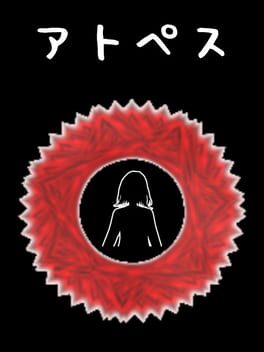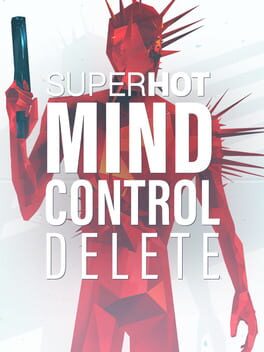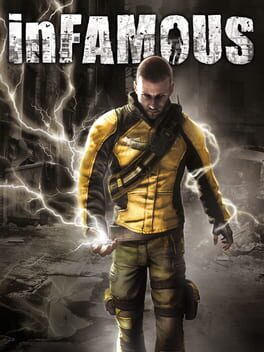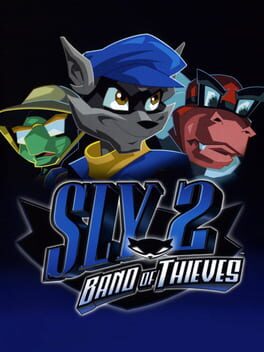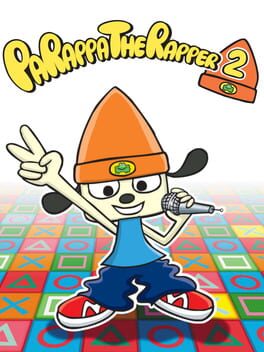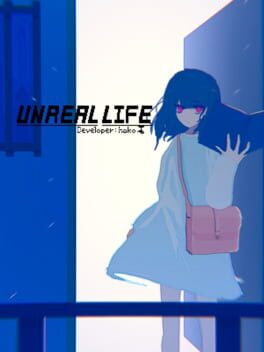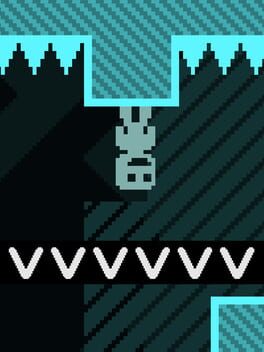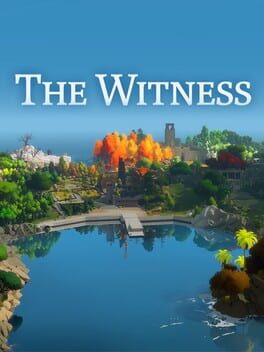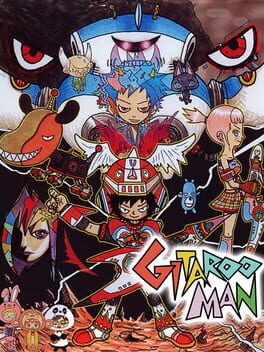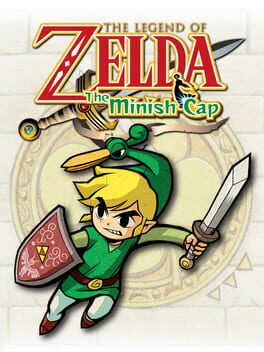merlot
2021
I think Atopes brings a lot of really neat ideas to the table. The game kind of exists in this meta space, where the developer breaks the fourth wall and points out that you're playing a video game. You have to go through the files to change out Anima's game cartridge, and they constantly have you messing with the innerworkings of your computer to progress. It reminds me a lot of OneShot, which does really similar tricks with text documents and moving your window around.
The games that you play in Atopes are pretty much all charming, but also really simple. There's a cool puzzle platformer called "Rainbow" that I would genuinely play more of if there was a full game. And "Bunny Chronicles" is this short shmup where you progressively get stronger with each time loop. There's some really neat ideas in here. They even have you read through a book and mess around with the links to progress. Everything here is passable to really cool, but nothing overstays its welcome. I wasn't huge on the RPG game at first, but it definitely grew on me towards the end. And I guess I can see the appeal of a game like ";", but it felt a little too math heavy for me.
I don't want to spoil too much about this game, but it's definitely one that I think people should play all the way through. It took me a lot longer than I expected, but I'm happy that I saw it out to the end. There's clearly a lot of passion put into this, and it's really cool that this is totally free.
The games that you play in Atopes are pretty much all charming, but also really simple. There's a cool puzzle platformer called "Rainbow" that I would genuinely play more of if there was a full game. And "Bunny Chronicles" is this short shmup where you progressively get stronger with each time loop. There's some really neat ideas in here. They even have you read through a book and mess around with the links to progress. Everything here is passable to really cool, but nothing overstays its welcome. I wasn't huge on the RPG game at first, but it definitely grew on me towards the end. And I guess I can see the appeal of a game like ";", but it felt a little too math heavy for me.
I don't want to spoil too much about this game, but it's definitely one that I think people should play all the way through. It took me a lot longer than I expected, but I'm happy that I saw it out to the end. There's clearly a lot of passion put into this, and it's really cool that this is totally free.
For the past week, Unwound Future has consumed my thoughts and all of my spare time. This game seriously kicks ass in the story and puzzle department, and I constantly found myself wanting to figure out how it was all going to end.
Layton games utilize the DS perfectly without ever feeling gimmicky. The moment to moment gameplay is point and click, which translates really nicely to the stylus. And being able to draw out or write my thoughts down on the screen works really well and isn't something you can translate to another console with ease. It's nice that they've made mobile ports for these games and all, but man nothing beats playing on the DS.
I think overall the puzzles here present a good amount of challenge, and it definitely takes a bit of time to get used to the game's language or the way it wants you to think. If a puzzle seems too simple, it usually is and there's some other layer that you aren't considering. In the beginning, I was going pretty slow with the puzzles, but for the last couple of chapters I was able to think through them really quickly. It's a pretty nice progression, and it definitely feels good to be able to fly through the late game.
I also thought the writing was really solid. They did a great job at making a unique story with all kinds of twists and turns. I constantly found myself wanting to keep playing to unravel more and more of what was going on, and I never would have guessed how things ended. It reminds me a lot of mystery novels where you as the reader constantly want to figure things out before the other characters. It's also a really heartfelt wrap-up to the initial trilogy and they did a good job of giving Professor Layton some real depth.
Unwound Future definitely does have its shortcomings in a few areas though. Finding every puzzle as you go means interacting with and talking to every NPC. It's never fully obvious when an NPC has a new puzzle for you, and it can be a little bit frustrating when you have to quickly tap through a dialogue you've already seen. It would definitely be nice if there was some kind of indicator of puzzle before you initiate conversation, however I get that this might break the immersion or cause the player to miss certain story elements.
I also think that there's certain sections of the game where the balance between plot and puzzles just isn't totally there. Like in areas like the pagoda it makes sense to have a puzzle gauntlet as you navigate up to the top. But other times they will just flood an unrelated area with puzzles, and I end up getting pretty sidetracked clearing them all out. I don't mind the puzzles, but I think Layton is at its best when it interweaves story beats with the puzzles. If they wanted to add in this many puzzles, I do wish that they would have added another plot beat or some kind of red herring to help space out the puzzles and keep me more engaged.
But these are really just minor nitpicks, and all in all I would highly recommend this game. It's important to know that this game does have a slower pace, and the gameplay is a lot less involved on the technical side. But the writing is super solid and the puzzles are satisfying to solve!
Layton games utilize the DS perfectly without ever feeling gimmicky. The moment to moment gameplay is point and click, which translates really nicely to the stylus. And being able to draw out or write my thoughts down on the screen works really well and isn't something you can translate to another console with ease. It's nice that they've made mobile ports for these games and all, but man nothing beats playing on the DS.
I think overall the puzzles here present a good amount of challenge, and it definitely takes a bit of time to get used to the game's language or the way it wants you to think. If a puzzle seems too simple, it usually is and there's some other layer that you aren't considering. In the beginning, I was going pretty slow with the puzzles, but for the last couple of chapters I was able to think through them really quickly. It's a pretty nice progression, and it definitely feels good to be able to fly through the late game.
I also thought the writing was really solid. They did a great job at making a unique story with all kinds of twists and turns. I constantly found myself wanting to keep playing to unravel more and more of what was going on, and I never would have guessed how things ended. It reminds me a lot of mystery novels where you as the reader constantly want to figure things out before the other characters. It's also a really heartfelt wrap-up to the initial trilogy and they did a good job of giving Professor Layton some real depth.
Unwound Future definitely does have its shortcomings in a few areas though. Finding every puzzle as you go means interacting with and talking to every NPC. It's never fully obvious when an NPC has a new puzzle for you, and it can be a little bit frustrating when you have to quickly tap through a dialogue you've already seen. It would definitely be nice if there was some kind of indicator of puzzle before you initiate conversation, however I get that this might break the immersion or cause the player to miss certain story elements.
I also think that there's certain sections of the game where the balance between plot and puzzles just isn't totally there. Like in areas like the pagoda it makes sense to have a puzzle gauntlet as you navigate up to the top. But other times they will just flood an unrelated area with puzzles, and I end up getting pretty sidetracked clearing them all out. I don't mind the puzzles, but I think Layton is at its best when it interweaves story beats with the puzzles. If they wanted to add in this many puzzles, I do wish that they would have added another plot beat or some kind of red herring to help space out the puzzles and keep me more engaged.
But these are really just minor nitpicks, and all in all I would highly recommend this game. It's important to know that this game does have a slower pace, and the gameplay is a lot less involved on the technical side. But the writing is super solid and the puzzles are satisfying to solve!
I don't think Mind Control Delete is a bad game, but I do think that it lacks a lot of what made SUPERHOT a great game. The core gameplay of SUPERHOT was more puzzle based than anything else. It had quick resets for each level, so it was mostly about learning your sequence of actions and then being a badass. It was simple, but allowed for plenty of opportunity for experimentation and optimization. I think that Mind Control Delete brings a lot to the table, but its change in gameplay design is where it misses the mark.
The original SUPERHOT had a fairly curated base game, with each level having a set number of enemies. One level played out the same way every time in terms of enemy spawn points, spawn times, and weapons. Mind Control Delete is procedurally generated, and thus weapons and throwables are placed everywhere over the map, and enemies can spawn through random doors at any moment. I think that the constant variety is great early on, as it lets the player learn the layouts of many maps in rapid succession. But as time goes on, I find myself feeling more frustrated with this approach, as it only amplifies some of the problems with the original game.
The original SUPERHOT had some issues with field of view. Because the game emphasized using your movement precisely, it was really easy to get tunnel vision on what was in front of you and forget about enemies spawning in behind you. The remedy for this was that the level played out the same each time, so getting better at the game was all about memorizing the level, and when and where each enemy would spawn.
Mind Control Delete encounters this same issue, but it lacks an easy solution. Because the game is a roguelike, you constantly are thrust into levels at random locations and an assortment of enemies are spawned in at random. Because you can never truly know where an enemy might spawn, it is safer for you as a player to stay away from the center of the map and have all enemy entries in sight. This forces you to play in corridors or with your back against the wall, which takes away from the fun of out maneuvering your enemies. You still can play in the middle if you're willing to be constantly turning around, however this causes time to pass in-game meaning that you put yourself at higher risk just by turning your head. They have a prompt for if a melee enemy is behind you, but it's pretty inconsistent with when it triggers and it doesn't help when you're being shot at by someone behind you. It's not the end of the world, and as you get better at the game you learn how to be more equipped with enemies spawning behind you, but it's still frustrating when you die to an enemy that you weren't aware of or isn't telegraphed to you in anyway.
My other major issue with the game is the hacks, which serve as stackable abilities. I love a lot of the ideas that they bring to the table, and they definitely expand a lot on SUPERHOT's gameplay. Ricocheting bullets, exploding throwables, boomerang shurikens. It's all super dope. But I feel like they never really stack in a meaningful way. One of the greatest feelings when playing a game like Binding of Isaac, Risk of Rain 2, or Hades is when your abilities start to stack and feel godly. It doesn't happen all the time, and it takes a lucky run, but it provides an insane level of satisfaction. Mind Control Delete doesn't ever really give you the opportunity to let loose with your abilities.
There's absolutely pairs of abilities that would mesh well together, and it's nice when you get them to line up in one run, but most nodes are so short-lived and only have 3-4 hacks, so you never actually feel like you get to take a fun build far before its reset.
I also think that the game starts to lose its steam as you continue playing. They continue to up the challenge with longer nodes and harder enemies, but things just don't feel as purposeful as they do in the first game. I liked a lot of the optimization of levels in the first game, so it's definitely disappointing that the second game detracts from optimization and focuses more on quick action.
I can see what they were going for here, and it's not a bad game, but I think that the gameplay of SUPERHOT doesn't totally align with the randomness of rogue-likes. It's still fun for a little bit, but it gets repetitive, and the payoff for completing each node isn't really great overall. I think that if they were to take these levels, hack ideas, and new enemy types and put them into a more curated experience like the first SUPERHOT it would be a really great sequel. I can't fault them for wanting to take SUPERHOT somewhere new, I just wish that they had found a way to minimize some of the original games problems.
The original SUPERHOT had a fairly curated base game, with each level having a set number of enemies. One level played out the same way every time in terms of enemy spawn points, spawn times, and weapons. Mind Control Delete is procedurally generated, and thus weapons and throwables are placed everywhere over the map, and enemies can spawn through random doors at any moment. I think that the constant variety is great early on, as it lets the player learn the layouts of many maps in rapid succession. But as time goes on, I find myself feeling more frustrated with this approach, as it only amplifies some of the problems with the original game.
The original SUPERHOT had some issues with field of view. Because the game emphasized using your movement precisely, it was really easy to get tunnel vision on what was in front of you and forget about enemies spawning in behind you. The remedy for this was that the level played out the same each time, so getting better at the game was all about memorizing the level, and when and where each enemy would spawn.
Mind Control Delete encounters this same issue, but it lacks an easy solution. Because the game is a roguelike, you constantly are thrust into levels at random locations and an assortment of enemies are spawned in at random. Because you can never truly know where an enemy might spawn, it is safer for you as a player to stay away from the center of the map and have all enemy entries in sight. This forces you to play in corridors or with your back against the wall, which takes away from the fun of out maneuvering your enemies. You still can play in the middle if you're willing to be constantly turning around, however this causes time to pass in-game meaning that you put yourself at higher risk just by turning your head. They have a prompt for if a melee enemy is behind you, but it's pretty inconsistent with when it triggers and it doesn't help when you're being shot at by someone behind you. It's not the end of the world, and as you get better at the game you learn how to be more equipped with enemies spawning behind you, but it's still frustrating when you die to an enemy that you weren't aware of or isn't telegraphed to you in anyway.
My other major issue with the game is the hacks, which serve as stackable abilities. I love a lot of the ideas that they bring to the table, and they definitely expand a lot on SUPERHOT's gameplay. Ricocheting bullets, exploding throwables, boomerang shurikens. It's all super dope. But I feel like they never really stack in a meaningful way. One of the greatest feelings when playing a game like Binding of Isaac, Risk of Rain 2, or Hades is when your abilities start to stack and feel godly. It doesn't happen all the time, and it takes a lucky run, but it provides an insane level of satisfaction. Mind Control Delete doesn't ever really give you the opportunity to let loose with your abilities.
There's absolutely pairs of abilities that would mesh well together, and it's nice when you get them to line up in one run, but most nodes are so short-lived and only have 3-4 hacks, so you never actually feel like you get to take a fun build far before its reset.
I also think that the game starts to lose its steam as you continue playing. They continue to up the challenge with longer nodes and harder enemies, but things just don't feel as purposeful as they do in the first game. I liked a lot of the optimization of levels in the first game, so it's definitely disappointing that the second game detracts from optimization and focuses more on quick action.
I can see what they were going for here, and it's not a bad game, but I think that the gameplay of SUPERHOT doesn't totally align with the randomness of rogue-likes. It's still fun for a little bit, but it gets repetitive, and the payoff for completing each node isn't really great overall. I think that if they were to take these levels, hack ideas, and new enemy types and put them into a more curated experience like the first SUPERHOT it would be a really great sequel. I can't fault them for wanting to take SUPERHOT somewhere new, I just wish that they had found a way to minimize some of the original games problems.
2009
I have super mixed feelings on Infamous. I think the concept and story here are really great. The level design is also really built around smooth traversal which is great. But there's also some serious issues with controls and the enemy AI.
From a gameplay standpoint, the game is decent. The initial gameplay loop of unlocking new powers and fighting off enemies was exciting at first. But as the game goes on and you start digging into the side content, it really starts to show its age. The side missions tended to be pretty repetitive, and obviously they're just side content, but I wish that there could have been a little more to them. I did really like the satellite uplink missions though, as they showed you how to get around the city fast.
I also wasn't huge on the morality system here. I get that for the sake of clarity, they wanted to walk through what would lead to a good karma choice and a bad karma choice for every decision, but it kind of broke the immersion for me when the game would freeze and Cole would weigh out his options. If they just allowed me to make my decision and then put a little good/bad karma reminder on the screen, it would have made things feel more cohesive in my eyes. Kind of like how Fallout communicates it's karma to the player.
One issue that I had with the game was the climbing. The climbing does this auto-snap onto ledges, which is nice in concept, but a lot of times it totally breaks up the flow. There were multiple times where I would struggle to get a battery core or I couldn't get to where I wanted because Cole was snapping on to some random ledge. The climbing also tended to just be spamming X and moving around the direction stick. Given the limitations I sort of get it, but the levels are designed with a good amount of verticality so its a shame that the platforming and climbing don't feel great. If there was some type of electric launch or electric wall-run, I think these problems would've been less noticeable. If they wanted climbing to be an "autopilot" mechanism, they should have shortened the amount of time it takes to reach the top of buildings. But if they wanted it to be more technical or player involved, I wish they would have done that too. In their past games, they had added sparkles so that the player could tap a button and make the choice to land on or climb an object. Although I don't know how well the sparkles could work, I think that the climbing could benefit if it allowed for more player input. I think making the climbing more involved would make it more player-driven and fun, or making it shorter would make it less mundane.
The horizontal traversal is really nice though, I like the rail slide and the momentum you can carry into your static glides. You could get some cool sideways launches, and it really made the traversal feel nice once I had finished the game.
The other major issue I had with this game was the enemy AI. I did a playthrough on both Hard and Medium, and the issue was the same in both. While you play the game, it constantly feels like the enemies have laser accuracy. This wouldn't be an issue if they only had this accuracy up close, as it should feel overwhelming to land in a hoard, but the enemies in this game have insane accuracy from multiple buildings away. Pretty much anywhere you go, you're constantly being shot at which breaks up a lot of the fun of traversal in the game.
This game shares a lot of DNA with Sly 2, but one of the biggest parallels I see is in the jungle-gym nature of the level design. In Sly 2 this design really works because as a thief, you constantly want to sneak around on the rooftops and scope out where you're going. For Infamous, this design should work, as the rooftops are where you can travel around the fastest. But it doesn't work because the rooftops leave you exposed from all angles. Instead the safest place to walk through are the alleys as there's really only two directions you can be shot from. The way I see it, Infamous has the design of a stealth game without any options for stealth. You have a really great city design where you can take multiple paths to avoid the enemy, but the climbing is fairly slow and the enemies constantly know where you are. If you're on the rooftops, you will be shot at until you take out all the enemies in the area.
I don't like being negative about this game because it's really clear that a lot of work and love and passion went into this. Sucker Punch made a really solid first entry to fun and gritty super hero series, and I think that's awesome. I really love the graphic novel cutscenes they do between the chapters, and the little phone calls between the different characters. They also made a pretty neat combat system, with loads of cool stunts and fun ways to mess around with the environment. There's a lot that's really great here, I just feel like it's held back by the time it was made and some of the design choices. I'll probably be playing through Infamous 2 sometime this month, so I'm hoping that game improves some of the issues I ran into here!
From a gameplay standpoint, the game is decent. The initial gameplay loop of unlocking new powers and fighting off enemies was exciting at first. But as the game goes on and you start digging into the side content, it really starts to show its age. The side missions tended to be pretty repetitive, and obviously they're just side content, but I wish that there could have been a little more to them. I did really like the satellite uplink missions though, as they showed you how to get around the city fast.
I also wasn't huge on the morality system here. I get that for the sake of clarity, they wanted to walk through what would lead to a good karma choice and a bad karma choice for every decision, but it kind of broke the immersion for me when the game would freeze and Cole would weigh out his options. If they just allowed me to make my decision and then put a little good/bad karma reminder on the screen, it would have made things feel more cohesive in my eyes. Kind of like how Fallout communicates it's karma to the player.
One issue that I had with the game was the climbing. The climbing does this auto-snap onto ledges, which is nice in concept, but a lot of times it totally breaks up the flow. There were multiple times where I would struggle to get a battery core or I couldn't get to where I wanted because Cole was snapping on to some random ledge. The climbing also tended to just be spamming X and moving around the direction stick. Given the limitations I sort of get it, but the levels are designed with a good amount of verticality so its a shame that the platforming and climbing don't feel great. If there was some type of electric launch or electric wall-run, I think these problems would've been less noticeable. If they wanted climbing to be an "autopilot" mechanism, they should have shortened the amount of time it takes to reach the top of buildings. But if they wanted it to be more technical or player involved, I wish they would have done that too. In their past games, they had added sparkles so that the player could tap a button and make the choice to land on or climb an object. Although I don't know how well the sparkles could work, I think that the climbing could benefit if it allowed for more player input. I think making the climbing more involved would make it more player-driven and fun, or making it shorter would make it less mundane.
The horizontal traversal is really nice though, I like the rail slide and the momentum you can carry into your static glides. You could get some cool sideways launches, and it really made the traversal feel nice once I had finished the game.
The other major issue I had with this game was the enemy AI. I did a playthrough on both Hard and Medium, and the issue was the same in both. While you play the game, it constantly feels like the enemies have laser accuracy. This wouldn't be an issue if they only had this accuracy up close, as it should feel overwhelming to land in a hoard, but the enemies in this game have insane accuracy from multiple buildings away. Pretty much anywhere you go, you're constantly being shot at which breaks up a lot of the fun of traversal in the game.
This game shares a lot of DNA with Sly 2, but one of the biggest parallels I see is in the jungle-gym nature of the level design. In Sly 2 this design really works because as a thief, you constantly want to sneak around on the rooftops and scope out where you're going. For Infamous, this design should work, as the rooftops are where you can travel around the fastest. But it doesn't work because the rooftops leave you exposed from all angles. Instead the safest place to walk through are the alleys as there's really only two directions you can be shot from. The way I see it, Infamous has the design of a stealth game without any options for stealth. You have a really great city design where you can take multiple paths to avoid the enemy, but the climbing is fairly slow and the enemies constantly know where you are. If you're on the rooftops, you will be shot at until you take out all the enemies in the area.
I don't like being negative about this game because it's really clear that a lot of work and love and passion went into this. Sucker Punch made a really solid first entry to fun and gritty super hero series, and I think that's awesome. I really love the graphic novel cutscenes they do between the chapters, and the little phone calls between the different characters. They also made a pretty neat combat system, with loads of cool stunts and fun ways to mess around with the environment. There's a lot that's really great here, I just feel like it's held back by the time it was made and some of the design choices. I'll probably be playing through Infamous 2 sometime this month, so I'm hoping that game improves some of the issues I ran into here!
2007
I first played Portal in middle school and my mind was blown on just a conceptual level. It felt so familiar to some other games I played, but the ideas were so fresh and challenged me in a way that I didn't even know a game could. The puzzles were well designed and the portal gun allowed you to be fairly abstract in your solutions.
Now it's been 8 years, and I've replayed this game over and over again, optimizing each chamber. The game is no longer about thinking through the puzzles for me, it's about moving quickly and effectively with a super cool portal gun. I think the fact that so many people continue to play Portal is just a testament to how well the game was designed.
On a first run, the focus is all on the puzzles and seeing how you can adapt to new challenges. But after that first run is done, the game essentially becomes this movement sandbox where people experiment with all kinds of momentum and portal tricks and b-hopping. There's plenty of challenges to try and techniques to learn. It's really great to see how well Valve nailed it when launching the Portal series.
I think in pretty much every category Portal 2 beats out Portal as the better game. But Portal was designed as this really concise and neat package, and I find myself coming back to it even more than Portal 2. It's story is absolutely more barebones and it's world isn't as fleshed out as Portal 2's world, but I really like how quickly things get going in Portal. There's something really valuable in the pick up and play feel of Portal.
This game is a classic. Portal is definitely worth your time. It's really easy to get into and doesn't take too long to fully play through.
Now it's been 8 years, and I've replayed this game over and over again, optimizing each chamber. The game is no longer about thinking through the puzzles for me, it's about moving quickly and effectively with a super cool portal gun. I think the fact that so many people continue to play Portal is just a testament to how well the game was designed.
On a first run, the focus is all on the puzzles and seeing how you can adapt to new challenges. But after that first run is done, the game essentially becomes this movement sandbox where people experiment with all kinds of momentum and portal tricks and b-hopping. There's plenty of challenges to try and techniques to learn. It's really great to see how well Valve nailed it when launching the Portal series.
I think in pretty much every category Portal 2 beats out Portal as the better game. But Portal was designed as this really concise and neat package, and I find myself coming back to it even more than Portal 2. It's story is absolutely more barebones and it's world isn't as fleshed out as Portal 2's world, but I really like how quickly things get going in Portal. There's something really valuable in the pick up and play feel of Portal.
This game is a classic. Portal is definitely worth your time. It's really easy to get into and doesn't take too long to fully play through.
This game is genuinely peak. I played Sly Cooper a lot as a kid, but when I made the jump from Sly 1 to Sly 2, it was like night and day. Sly 1 was a fairly fun 3D platformer with lots of fun stages and collectibles. Sly 2 takes a much more open approach, giving you a new map to explore with each chapter, and missions that slowly open up as you go about the heist. The maps are primarily designed around staying up high, and there's a lot of fun platforming and stealth checks to maintain these high routes.
I always loved how Sly 2 would break each chapter down into a particular heist, and each mission felt as though it was setting up that final mission. Every member of the team has some kind of role to play, and it helps a lot with the pacing of this game. Sucker Punch also got really creative with the ways you can use Murray and Bentley in this game, and they only pushed it more with Sly 3 and the ensemble cast.
There's definitely a couple of missions that tended to be tedious or frustrating, but for the most part all of the missions seemed well thought out and fun. I honestly don't have many critiques for this game, but I could absolutely be blinded a bit by my nostalgia.
This game is great and still holds up really well. It's crazy that this studio went from making Sly Cooper, to Infamous, to Ghost of Tsushima. Even in a game like Infamous, I can still see that Sly influence in its climbing and platforming. This game is really outstanding, and both Sly 2 and Sly 3 are worth your time!
I always loved how Sly 2 would break each chapter down into a particular heist, and each mission felt as though it was setting up that final mission. Every member of the team has some kind of role to play, and it helps a lot with the pacing of this game. Sucker Punch also got really creative with the ways you can use Murray and Bentley in this game, and they only pushed it more with Sly 3 and the ensemble cast.
There's definitely a couple of missions that tended to be tedious or frustrating, but for the most part all of the missions seemed well thought out and fun. I honestly don't have many critiques for this game, but I could absolutely be blinded a bit by my nostalgia.
This game is great and still holds up really well. It's crazy that this studio went from making Sly Cooper, to Infamous, to Ghost of Tsushima. Even in a game like Infamous, I can still see that Sly influence in its climbing and platforming. This game is really outstanding, and both Sly 2 and Sly 3 are worth your time!
2001
I think this game was a really big step up from the first game in terms of quality and production! There's really a lot to love here, the story is really fun and cohesive, and the music is great. At the base level, it definitely feels a bit easier than the first game, but there's enough additional challenges to keep you occupied in the post game. I think the charm is what helps this hold up so well, but it definitely makes me wish there was more Parappa. Like the team was so incredibly talented, and they weren't afraid to invent their own lane.
It's short and sweet, but it oozes creativity, and it's definitely worth a play if you've got a way to do so!
It's short and sweet, but it oozes creativity, and it's definitely worth a play if you've got a way to do so!
2020
This game is really special, and it's clear just how talented hako is. There's a really great and raw story here, and it's all compacted into a really sweet package.
The best way to describe this is a cross between a point-and-click adventure and an RPG. The primary gameplay loop is going to a new area, interacting with every object in that area, and then using the systems of the current area to unlock a way to the next area. But Unreal Life is so much more than just that simple description I gave. There's some really powerful writing here, and a really charming cast of characters. The world is coated in shades of blue, and the pixel art is really stunning. There's also a really solid soundtrack to go along with it.
This game is super heavy on dialogue, and the gameplay is pretty stripped back to walking and interacting. It's not for everyone, but for people who are looking for a solid story and an atmospheric world, this game nails it.
Honestly my only complaints with the game are more on the technical side. There were several longer dialogue scenes where the music would switch with each text box. It got pretty distracting, and really took away from the weight of these scenes. There was also a tendency in the longer dialogue scenes for the game to cut to black between textboxes and display a quick loading screen. I get that new things needed to be loaded in, but I wish it could have been more seamless, or loaded things in without fading to black.
If this sounds like it's up your alley, definitely give it a play. And if you need a little more convincing, there's a train conductor penguin who likes sleeping and smoking cigarettes. I don't know what else you could want out of a game.
The best way to describe this is a cross between a point-and-click adventure and an RPG. The primary gameplay loop is going to a new area, interacting with every object in that area, and then using the systems of the current area to unlock a way to the next area. But Unreal Life is so much more than just that simple description I gave. There's some really powerful writing here, and a really charming cast of characters. The world is coated in shades of blue, and the pixel art is really stunning. There's also a really solid soundtrack to go along with it.
This game is super heavy on dialogue, and the gameplay is pretty stripped back to walking and interacting. It's not for everyone, but for people who are looking for a solid story and an atmospheric world, this game nails it.
Honestly my only complaints with the game are more on the technical side. There were several longer dialogue scenes where the music would switch with each text box. It got pretty distracting, and really took away from the weight of these scenes. There was also a tendency in the longer dialogue scenes for the game to cut to black between textboxes and display a quick loading screen. I get that new things needed to be loaded in, but I wish it could have been more seamless, or loaded things in without fading to black.
If this sounds like it's up your alley, definitely give it a play. And if you need a little more convincing, there's a train conductor penguin who likes sleeping and smoking cigarettes. I don't know what else you could want out of a game.
2010
This is a game that I've played and replayed so many times. The gameplay is super intuitive and easy to pick up. It's challenging without being too difficult, and with a little bit of practice you can ease through this game. I decided to replay this one, and it's really great for how quick it goes by. The world is fairly dense and packed with secrets, so everything is easy to locate on a first playthrough. There's also time trials and deathless challenges which add an extra layer to the gameplay and provides some ambitious goals for anyone looking to replay. And of course the music is really great.
I think this game has a lot of ideas for the confines of its controls. It took me less than an hour to beat it, so I guess my only wish is that there was a little more to this. But I also think that it's short playtime has lead to all of my replays, so I can also see that as a major upside for anyone interested in speedrunning or optimization. It's a great game, and if you haven't played it yet you absolutely should.
I think this game has a lot of ideas for the confines of its controls. It took me less than an hour to beat it, so I guess my only wish is that there was a little more to this. But I also think that it's short playtime has lead to all of my replays, so I can also see that as a major upside for anyone interested in speedrunning or optimization. It's a great game, and if you haven't played it yet you absolutely should.
2016
I finally beat this game after multiple years of starting and then not coming back to it. I think before, I would typically get stuck at an area, give up pretty quickly, and then look online for a hint. That style of play was super unmotivating because the biggest draw of this game is its sense of discovery.
Coming back to the game again, I was familiar with some of the mechanics, but I had forgot a lot, so I started writing down the rules in a notebook. I think having a physical notebook where I could write down everything I found was a gamechanger for how I approached this game. It made me super curious to figure out all of the rules and see how they would work together. Especially in the town section and the ending it was super helpful to draw up what I had seen and sketch out potential solutions. If you're looking into playing this game, I really recommend doing the same or maybe even taking screenshots so you can mark up the puzzles.
While the base puzzles were really well put together and challenging, I really loved discovering how to use the obelisk. I don't want to spoil things for anyone, but figuring out what they did completely changed the way I was interacting with the world around me. It really made me appreciate the layout of the map.
Probably one of my only complaints about this game is its sound design. The game uses a kind of directional sound, where if your facing an object that's making noise you'll hear it, but as you look away it will fade. It's a cool idea, but I think it would've worked better with some kind of proximity feature, where you hear it if your close to an object, not if you're looking at it. I get that the sound was probably implemented due to some of the auditory puzzles, but as someone who was constantly looking around at everything, it was pretty annoying to hear like motor noises and water streams fading in and out all the time when I was right next to them.
Overall though this is a great game. I clocked in at about 20 hours to finish, but it's a lot faster on replays once you know what's going on. It's definitely not a game that everyone will enjoy, but for people who like puzzle games, this one is top notch. It's got a great atmosphere and a really nice challenge to it. I'll probably be replaying soon to try and solve all of the obelisks.
Coming back to the game again, I was familiar with some of the mechanics, but I had forgot a lot, so I started writing down the rules in a notebook. I think having a physical notebook where I could write down everything I found was a gamechanger for how I approached this game. It made me super curious to figure out all of the rules and see how they would work together. Especially in the town section and the ending it was super helpful to draw up what I had seen and sketch out potential solutions. If you're looking into playing this game, I really recommend doing the same or maybe even taking screenshots so you can mark up the puzzles.
While the base puzzles were really well put together and challenging, I really loved discovering how to use the obelisk. I don't want to spoil things for anyone, but figuring out what they did completely changed the way I was interacting with the world around me. It really made me appreciate the layout of the map.
Probably one of my only complaints about this game is its sound design. The game uses a kind of directional sound, where if your facing an object that's making noise you'll hear it, but as you look away it will fade. It's a cool idea, but I think it would've worked better with some kind of proximity feature, where you hear it if your close to an object, not if you're looking at it. I get that the sound was probably implemented due to some of the auditory puzzles, but as someone who was constantly looking around at everything, it was pretty annoying to hear like motor noises and water streams fading in and out all the time when I was right next to them.
Overall though this is a great game. I clocked in at about 20 hours to finish, but it's a lot faster on replays once you know what's going on. It's definitely not a game that everyone will enjoy, but for people who like puzzle games, this one is top notch. It's got a great atmosphere and a really nice challenge to it. I'll probably be replaying soon to try and solve all of the obelisks.
2001
This game is super sick! I think what stands out the most to me here is the music. It covers so many different genres and nails it. From funk to dnb to rock and acoustic guitar, there's a lot of really great tracks. The difficulty pretty much consistently ramps up, and there's definitely a learning curve to it, but nothing feels out of reach in the base game. It just takes a bit of practice to make it through. And the music being so good is just an added bonus.
In terms of gameplay, there's kind of two different rhythm games melding together here. One is pretty standard where you're pressing specific buttons to the timing of the song and on screen (defense), but the other has you using the analog stick to line up with different notes and play them on time (attack and charge). I had a lot easier of a time picking up the defense side of things, and the attacking is where it gets a little more tricky on a technical level. It's a really cool way to add in all of the guitar effects, and although it took a while to figure out, I really enjoy the balance between the two.
I think the art direction is also super cool, and while it's definitely pretty dated in that early 2000s 3D modeling style, it's got a great use of color and really charming character design. I also love all of the visual effects going on in each song. It can definitely be a little distracting at times, but I love seeing like the little frogs sing along or seeing the people cheering.
This game has a lot of heart, and it's got a really nice challenge to it. It's been on my radar for a while, and I'm so glad I took the time to play it!
In terms of gameplay, there's kind of two different rhythm games melding together here. One is pretty standard where you're pressing specific buttons to the timing of the song and on screen (defense), but the other has you using the analog stick to line up with different notes and play them on time (attack and charge). I had a lot easier of a time picking up the defense side of things, and the attacking is where it gets a little more tricky on a technical level. It's a really cool way to add in all of the guitar effects, and although it took a while to figure out, I really enjoy the balance between the two.
I think the art direction is also super cool, and while it's definitely pretty dated in that early 2000s 3D modeling style, it's got a great use of color and really charming character design. I also love all of the visual effects going on in each song. It can definitely be a little distracting at times, but I love seeing like the little frogs sing along or seeing the people cheering.
This game has a lot of heart, and it's got a really nice challenge to it. It's been on my radar for a while, and I'm so glad I took the time to play it!
I genuinely loved playing through this! In middle school I used to try to emulate it on my phone, but the emulator I used would get taken down and I lost my progress multiple times. I'm so glad I got to see it all the way through this time.
I think that this is one of the most polished top-down Zelda games of all time. The art style definitely takes inspiration from Wind Waker, but the artists really nailed this colorful and "softer" pixel art style. It really maximizes its hardware and it looks a lot better than the Oracle games and Link's Awakening as a whole.
The puzzles here were super great, I really enjoyed the way that the dungeons are broken up by Hyrule Town, which is essentially a big dungeon with no enemies. It's a nice change of pace and it encourages the player to explore a good amount. Hyrule Town is also packed with so many shops and people and challenges, it feels like a lively place.
I also really enjoyed the big vs. small gimmick here because it presented everything you needed to know on one screen. I love A Link to the Past, but having to memorize the layouts of the dark world and light world to piece together puzzles was not so ideal on my first time around. I think that having everything visible to the player allows them to get their wheels turning earlier on and makes the puzzles feel more seamless. Like I could be solving another puzzle and notice a little mousehole, and then my brain would start to try to think of the ways I could shrink and find a pathway there. It's really great design and definitely makes this feel accessible but challenging.
The dungeons were all pretty cool, but the Palace of Winds and Hyrule Castle were amazing as the final two. They were really expansive and tested a lot of puzzle knowledge and combat knowledge to make it through. The bosses also ramped up with each new dungeon, and the final boss was great because it forced you to use so many items. What's great about Zelda bosses is that the difficult almost always stems from learning what items you should use rather than perfecting dodges and spacing. I like difficult games, but this design really embodies what makes Zelda games feel so special.
I did have a couple of issues in Hyrule Town, where I remembered things I was supposed to do from when I played back in middle school, but I would try to do them too early. Or I would forget little steps and be confused with why I couldn't do anything. This is definitely more on my end though, so I won't fault the game for this.
My only real issue with this are the mysterious shells which unlock little figures. I think the figures are cool and give great details, and I don't even mind the shells as rewards, it's just how time consuming it is to get 1 capsule. It takes a good 10-15 seconds to get a capsule, and there's also like 4+ different button inputs that you need, meaning you can't completely turn your mind off while you open them. Having the shells max out at 999 means that you have to go spend them when they fill up, but it's such a slow process, and early on you only use 1 at a time, so it takes a while to get rid of them. If it only took 5 seconds with 1 button press, it would be fine, but it's just a lot of mindless work for a bunch of figurines and a heart piece.
A lot of people also complain about the kinstones, but I really don't mind them. The idea is that for handheld players, it's easy to pick up and complete a kinstone challenge really quickly. As long as you're cutting grass and interacting with the world, you should have plenty of kinstones to trade, and it's pretty easy to knock out your trades when you first meet someone, so you don't have to backtrack. I it's a cool idea that interacting with the world and its characters gives you more quests and opens up more areas. It's pretty neat, and I think most people's gripes stem from not wanting to interact with the world.
Overall this game rules and holds up super well. Definitely one of my top Zelda games. Fujibayashi is really innovative with the series, and its awesome to see how he's grown as a director.
I think that this is one of the most polished top-down Zelda games of all time. The art style definitely takes inspiration from Wind Waker, but the artists really nailed this colorful and "softer" pixel art style. It really maximizes its hardware and it looks a lot better than the Oracle games and Link's Awakening as a whole.
The puzzles here were super great, I really enjoyed the way that the dungeons are broken up by Hyrule Town, which is essentially a big dungeon with no enemies. It's a nice change of pace and it encourages the player to explore a good amount. Hyrule Town is also packed with so many shops and people and challenges, it feels like a lively place.
I also really enjoyed the big vs. small gimmick here because it presented everything you needed to know on one screen. I love A Link to the Past, but having to memorize the layouts of the dark world and light world to piece together puzzles was not so ideal on my first time around. I think that having everything visible to the player allows them to get their wheels turning earlier on and makes the puzzles feel more seamless. Like I could be solving another puzzle and notice a little mousehole, and then my brain would start to try to think of the ways I could shrink and find a pathway there. It's really great design and definitely makes this feel accessible but challenging.
The dungeons were all pretty cool, but the Palace of Winds and Hyrule Castle were amazing as the final two. They were really expansive and tested a lot of puzzle knowledge and combat knowledge to make it through. The bosses also ramped up with each new dungeon, and the final boss was great because it forced you to use so many items. What's great about Zelda bosses is that the difficult almost always stems from learning what items you should use rather than perfecting dodges and spacing. I like difficult games, but this design really embodies what makes Zelda games feel so special.
I did have a couple of issues in Hyrule Town, where I remembered things I was supposed to do from when I played back in middle school, but I would try to do them too early. Or I would forget little steps and be confused with why I couldn't do anything. This is definitely more on my end though, so I won't fault the game for this.
My only real issue with this are the mysterious shells which unlock little figures. I think the figures are cool and give great details, and I don't even mind the shells as rewards, it's just how time consuming it is to get 1 capsule. It takes a good 10-15 seconds to get a capsule, and there's also like 4+ different button inputs that you need, meaning you can't completely turn your mind off while you open them. Having the shells max out at 999 means that you have to go spend them when they fill up, but it's such a slow process, and early on you only use 1 at a time, so it takes a while to get rid of them. If it only took 5 seconds with 1 button press, it would be fine, but it's just a lot of mindless work for a bunch of figurines and a heart piece.
A lot of people also complain about the kinstones, but I really don't mind them. The idea is that for handheld players, it's easy to pick up and complete a kinstone challenge really quickly. As long as you're cutting grass and interacting with the world, you should have plenty of kinstones to trade, and it's pretty easy to knock out your trades when you first meet someone, so you don't have to backtrack. I it's a cool idea that interacting with the world and its characters gives you more quests and opens up more areas. It's pretty neat, and I think most people's gripes stem from not wanting to interact with the world.
Overall this game rules and holds up super well. Definitely one of my top Zelda games. Fujibayashi is really innovative with the series, and its awesome to see how he's grown as a director.
